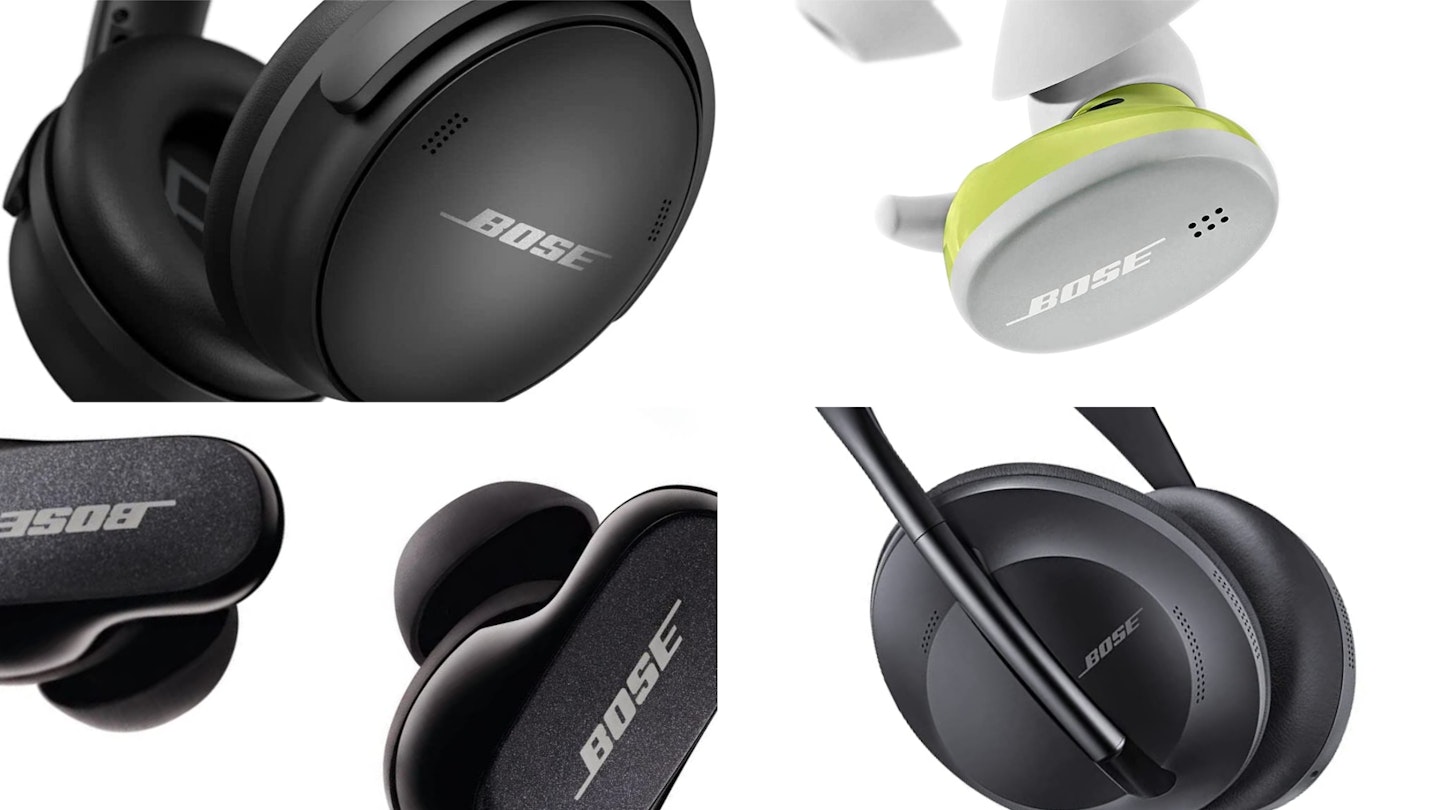So, you’ve finally decided to ditch those earbuds that make The Rolling Stones sound like they’ve rolled into a tin can and are looking for the best Bose headphones. Thankfully, there's an impressive array of excellent headphones available to whet your appetite for bigger and better sound.
Bose has been around since the early days of hi-fi, and in that time it's learned a trick or two. Almost sixty years after it formed, the Bose brand is now synonymous with high-quality sound reproduction.
Bose headphones are renowned for their exceptional sound quality, noise-cancelling technology, and comfortable design. These premium audio devices offer an immersive listening experience for music, movies, or calls. With a reputation for innovation and craftsmanship, Bose headphones cater to audiophiles and commuters, ensuring a superior sonic journey.
The best Bose headphones of 2025 at a glance:
• Best budget Bose: Bose QuietComfort - Buy now on Amazon UK
• Best Bose for sports: Bose Sport - Buy now on Amazon UK
• Best Bose for everyday use: Bose QuietComfort 45 - Buy now on Amazon UK
• Best Bose for gaming: Bose QuietComfort 45 - Buy now on Amazon UK
Much like its rival Sony's headphones, Bose has a habit of packing its sonic know-how into some of the most solid audio kits you can buy. And then there are those refined, understated looks - simplicity never goes out of style. With all of that under our collective headsets, let’s take a look at the best Bose headphones available in 2025.
Please note: All prices are correct at the time of writing. Prices, stock and deals are subject to change without notice.
Best Bose headphones of 2025
Best Bose headphones for gym and running
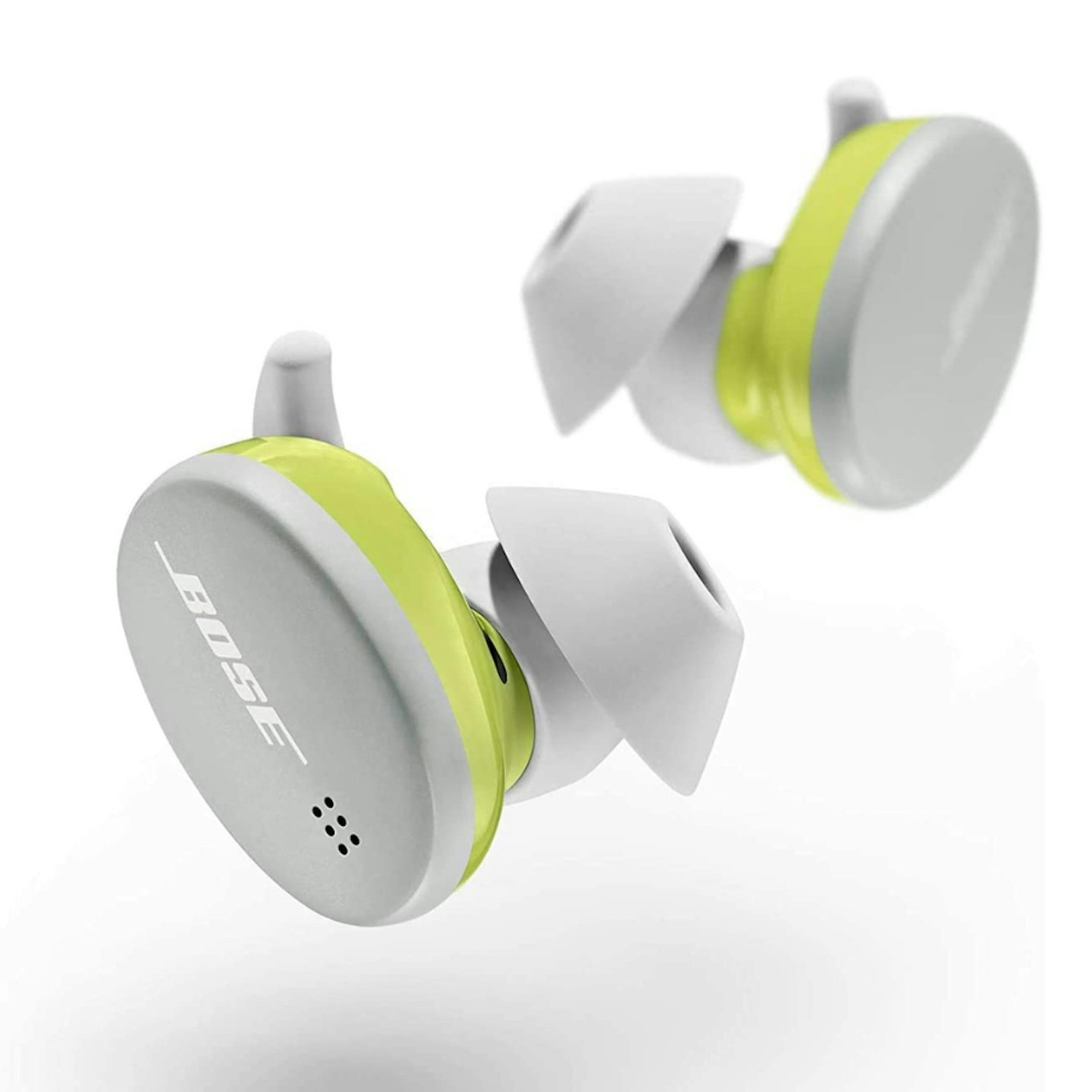
A familiar staple of the Bose headphones range is its Sport Earbuds. The impressive engineering inside this compact and stylish design really delivers on all fronts. Bose’s proprietary acoustic port design means that the drivers deliver a much bigger sound across the board. Bass response is rich and the Bose Music app allows for fine-tuning of the EQ.
The shape and accessibility of these Sport Earbuds are the winning features here, as runners or gymgoers will appreciate. A comfortable fit right out of the box, they come with three sizes of StayHear Max tips to keep them securely in place while working out. Their capacitive touch interface means you only need to tap an earbud to play, pause, receive calls and more.
These have a built-in microphone array to help separate your voice from your surroundings, but there is no noise-cancelling here as you might expect at this price point. IPX4 water resistance means they’ll withstand weather and sweat. Battery life is respectable, lasting up to five hours. To top it off, you can choose from three colours - Baltic Blue, Glacier White, and Triple Black.
Pros
- Secure fit with wing tip size options
- Big sound in a small package
- Capacitive touch controls
- IPX4 water resistance
Cons
- No Active Noise Cancelling
| Type: | In-ear |
| Weight: | 9 grams |
| Battery life | Up to five hours (charging case offers two additional full charges) |
| Charging: | Charging case / USB-C |
| Connection type: | Bluetooth 5.1 |
| Microphone(s): | Beamforming microphone array |
| Control interface: | Capacitive touch |
- Customer review: "I've been using these for a few weeks now and I'm very pleased with them. I forget that they're in and the sound quality is excellent, to the point where you get a sense of where the instruments are placed in the mix with some tracks. I would definitely recommend for running and any other outdoor activities."
Best Bose headphones for everyday use
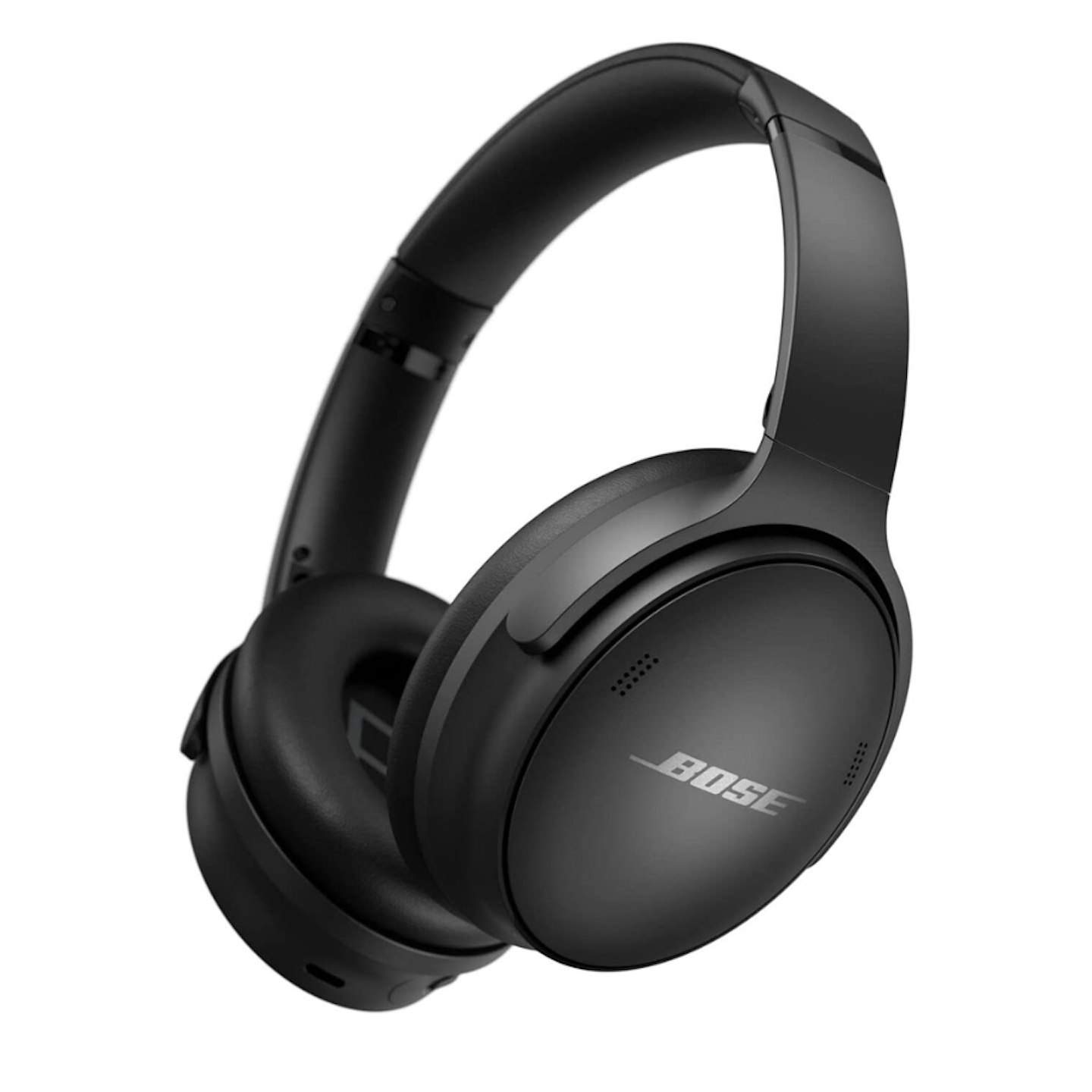
Perhaps the most aptly named Bose headphones here, the QuietComfort 45 is an excellent choice for general everyday use. As the name suggests, they specialise in an impressive level of noise-cancellation plus synthetic leather for supreme comfort during those long commutes. Capacitive touch controls make control easy, and there are two noise-cancelling modes: Quiet, for full cancelling and Aware Mode, to filter in sound from the outside world.
There’s no compromise on sound quality here either. Bose’s TriPort acoustic design means that bass is deep and full, and the overall experience is extremely well-balanced. If you’ve ever been frustrated by thin bass at lower volumes, and overloaded bass at the top end, Active EQ monitors all frequencies at all volume levels - delivering balanced sound throughout.
Pros
- Excellent noise cancelling
- Four built-in microphones
- Active EQ
- Designed for comfort
- Up to 24 hours of battery life
Cons
- Secure enough fit for walking, but nothing more
| Type: | Over-ear |
| Weight: | 240 grams |
| Battery life: | Up to 24 hours |
| Charging: | USB-C |
| Connection type: | Wired (3.5mm) and Bluetooth 5.1 |
| Microphone(s): | Four |
| Control interface: | Capacitive touch |
- Customer review: "Whilst I can not say with any degree of authority that these are better or worse than the rival option all I can say is I am very pleased with this pair of QC 45s. As a test I trialled them outside, with noise cancellation active and playing various soft rock at 60% volume on a busy road during the school run, I could barely hear the machine, in fact, I think I could hear the vibration through my body rather than the machine, I couldn’t hear the sound of the car door close or passing buses intrude into the music."
Best noise-cancelling in-ear Bose headphones
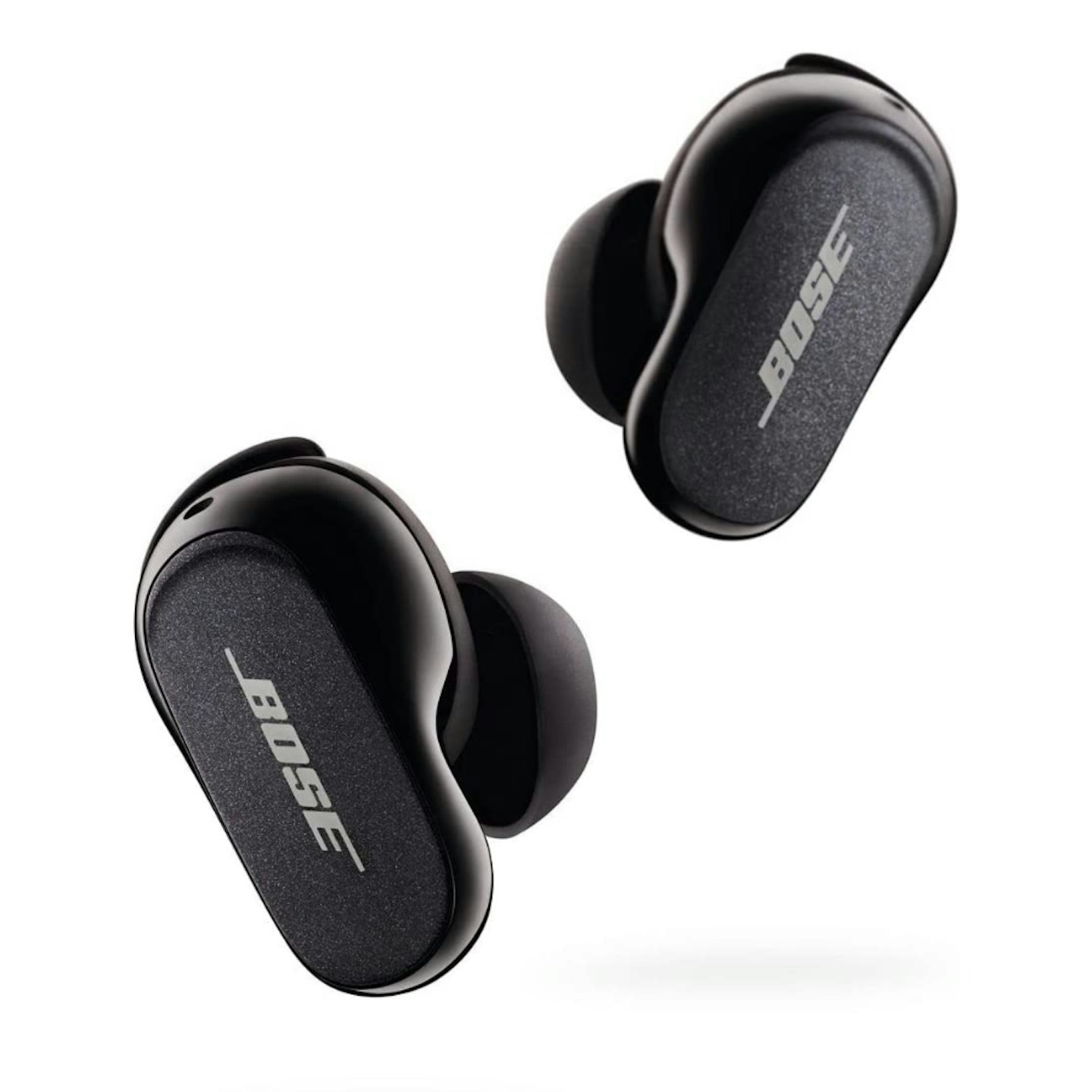
Bose class these as the ‘World’s Best’ noise-cancelling headphones; a bold claim, but third-party tests would seem to back that up. The signature Bose soundstage is there, delivering plenty of space for instrument separation and tonal range.
Battery life is an impressive six hours, more than enough for most. The additional charge from the included case boosts them to an incredible 24 hours. Capacitive touch brings simplicity and convenience to your listening wherever you are.
These are also an excellent option for sporty types who want noise cancelling both in and outside the gym. The included silicone stability bands work well with the ear tips (there are three of each) to keep these little beauties in place. But, if you already know that you need larger tips (wingtips) to keep any earbuds from falling out, you should perhaps consider the Bose Sport Earbuds instead.
Pros
- Best in class active noise cancelling
- Remarkably rich bass response
- Stability bands and ear tips for maximum hold
- Up to 24 hours of battery life
Cons
- Noise cancelling has Active mode, but no ‘off’ setting
- A microphone isn’t as good as some over-ear models
- No wingtip type tips included
| Type: | In-ear |
| Weight: | 9 grams |
| Battery life: | Up to six hours (24 with charging case) |
| Charging: | Charging case / USB-C |
| Connection type: | Bluetooth 5.3 |
| Microphone(s): | Four (two in each earbud) |
| Control interface: | Capacitive touch |
- Customer review: "I was very impressed with the noise cancellation of both the AirPods Pro and the QC II's. They could both block out the majority of noise levels that I encountered however the noise cancellation of the QC II's was probably slightly better. I also found the QC II's gave me less (although it was still there) of a pressure feeling in my ears when the noise cancellation was active. However, when in transparency mode (which allows you to still hear what's going on in the outside world whilst listening to music/podcasts, etc.), the QC II's produced a constant background hiss which eventually began to hurt my ears and in turn contributed to the comfort level described above."
Best Bose noise-cancelling headphones for audiophiles
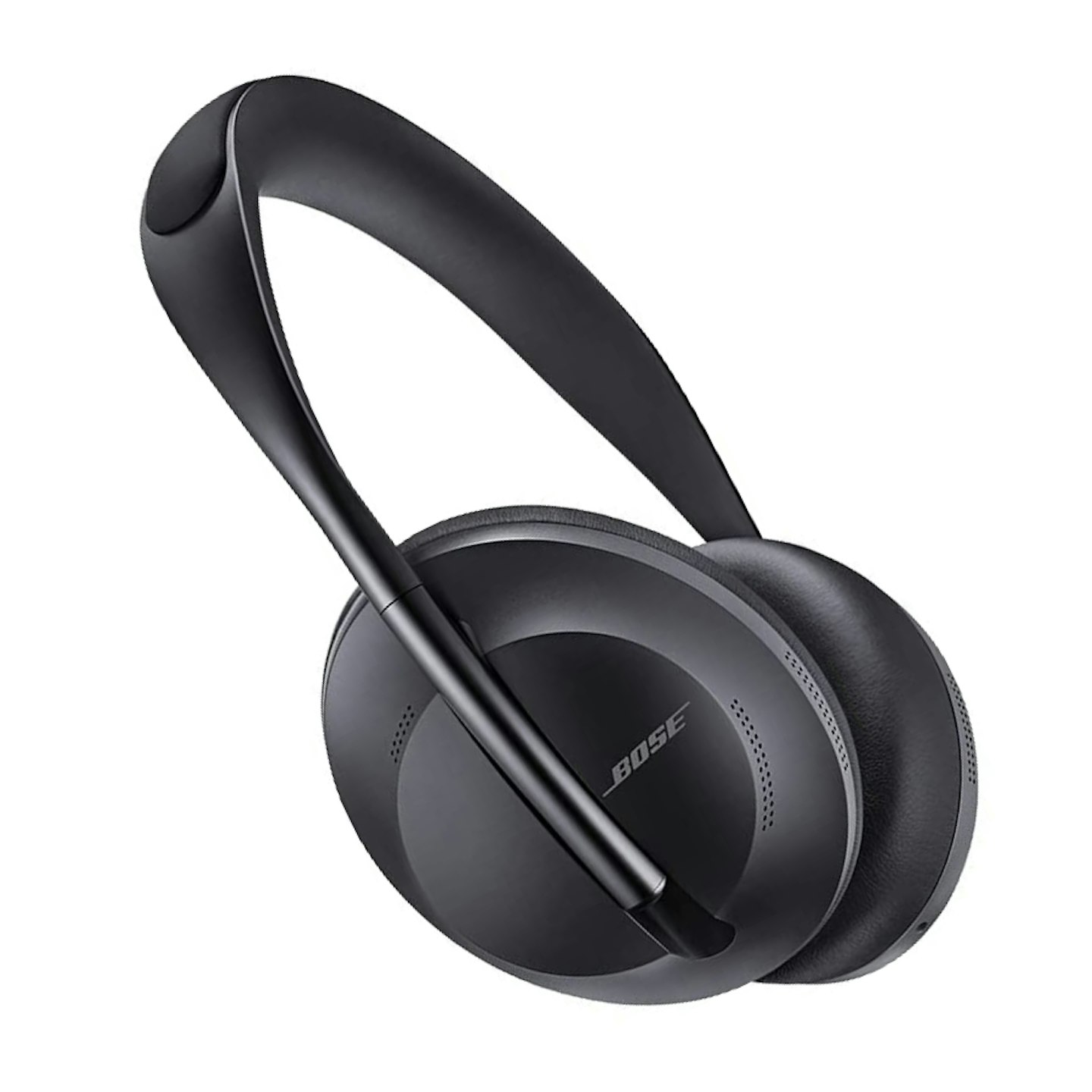
While Bose has a stellar reputation for audio quality, the company doesn’t use the ‘audiophile’ moniker to describe any of the headphones across its range. That said, the combination of over-ear sound isolation with an incredible 11-level active noise-cancelling system should ensure a more than satisfying experience for audiophiles. There are excellent built-in adaptive microphone systems for clear voice calls too.
These headphones boast a balanced ‘life-like’ sound, with crisp details, deep bass and plenty of space for the mids - the rich soundscape that you might expect from the Bose brand at this price point. There’s a welcome addition in the form of quick one-touch access to your Spotify playlists, plus integration with popular voice assistants like Alexa for those who like home automation and control. The Bluetooth implementation here is version 5.0, a couple of versions older than we’re used to, but as the standard is backwards-compatible, this shouldn’t be an issue for most.
Pros
- 11 levels of active noise cancelling
- Premium build and design
- Supports Amazon Alexa, Google Assistant and more
- One-touch access to Spotify
- Up to 20 hours of battery life
Cons
- Spotify integration only works when paired with an iOS device
- Slightly older Bluetooth 5.0
| Type: | Over-ear |
| Weight: | 249.48 grams |
| Battery life: | Up to 20 hours |
| Charging: | USB-C |
| Connection type: | Bluetooth 5.0 |
| Microphone(s): | Eight (two for voice pick-up) |
| Control interface: | Capacitive touch, buttons |
- Customer review: "The Bose offers a nice soundscape, loved the mid’s and high’s on the Bose. And the detail to the music overall. The sound of drums thumping. The slight bass kicking. I’m not into that hippity hop music or trance or pop; so can’t tell you how the Bose fairs on that kind of sound. But would imagine it would handle it well. The Bose are also very comfortable to wear; they don’t feel heavy or clingy. And so far my ears haven’t started sweating."
Best budget Bose headphones
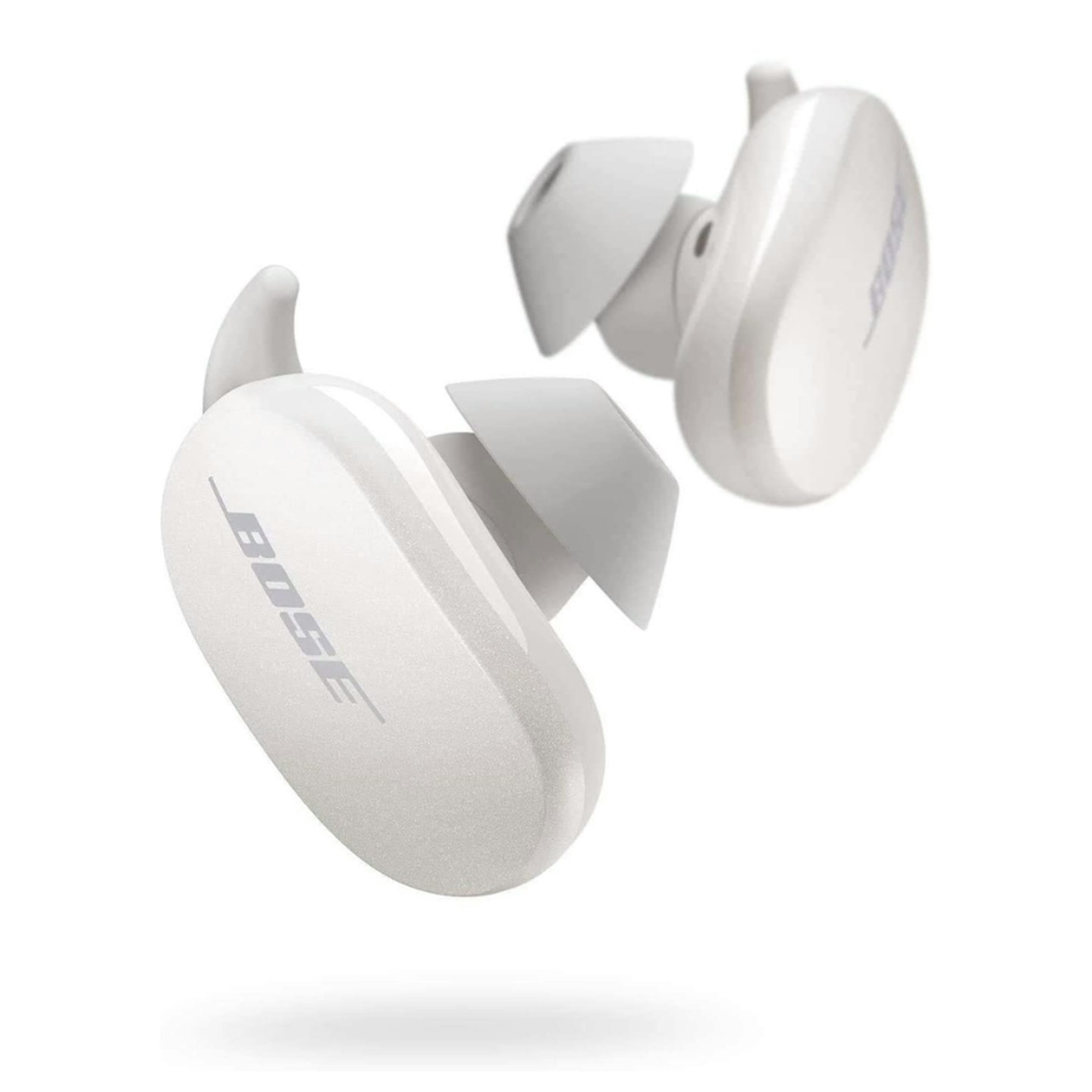
Last but certainly not least for those on a tighter budget who still want Bose quality sound, the first iteration of the Bose QuietComfort Earbuds can be found at a massive discount. They’re ideal if you want to dip a toe into active noise-cancellation but don't mind having a slightly older Bluetooth standard (5.1) and limited touch control.
Still, they use the Bose Music app for those important adjustments. And unlike the QuietComfort II, they come with wingtips for gymgoers and active types. There’s a microphone for voice calls, and they come in three colours - white being the most affordable at the time of writing.
Pros
- Wingtips for those who need extra stability
- Active noise-cancellation
- IPX4 water resistance
Cons
- Charging case capacity lower than some others
- Limited number of touch control functions
| Type: | In-ear |
| Weight: | 9 grams |
| Battery life: | Up to 5 hours (15 with charging case) |
| Charging: | Charging case / USB-C |
| Connection type: | Bluetooth 5.3 |
| Microphone(s): | Four (two in each earbud) |
| Control interface: | Capacitive touch |
- Customer review: "These Bose ear-buds have an ear-tip system which is comfortable for up to an hour, for me. Versus only ~20 minutes for the Sony's. The Bose securely nestles in my fussy little ears, using the small-size tips. Even though their prong doesn't extend into the fold at the back of my outer ear, like the less comfortable mediums, they still don't shake loose."
Fine-tuning with the Bose app
All of the Bose headphones we’ve featured have app connectivity - but what doesn’t these days? There are two versions of the Bose app: Connect, and Bose Music. Music is the newest of the two, featuring full control over noise cancellation and EQ. You can even set up multiple user profiles - handy if your partner or flatmate keeps nicking your cans. It also provides firmware updates and integration with popular streaming services like Spotify and Amazon Music.

Frequently Asked Questions about Bose Headphones
Are there Bose headphones for gaming?
Bose doesn’t explicitly aim their headphones at gamers, but you can still use the QuietComfort 45 for some multiplayer action. Many gamers enjoy the Bose audio quality and broad soundstage for their gaming. There’s also the all-important option to use the 3.5mm wired connection if you’re worried about latency.
Many say that pairing these with a separate microphone ticks all of the hardcore gaming boxes. The more casual gamer may be fine with slightly lower mic quality than a premium gaming headset.
Are Bose headphones compatible with Apple iPhone?
If you’re thinking Bluetooth - yes. The Bluetooth standard is backwards-compatible, so as long as your brand-new headphones have it, your older devices will still connect. This includes smartphones, tablets and the like.
Do Bose headphones work with PS5?
Even though all of these Bose headphones have Bluetooth, the PlayStation 5 doesn’t natively support Bluetooth audio devices. But there is a workaround. A USB Bluetooth audio adapter will give your console just what it needs. Look for one with low latency support which most gamers will need for maximum responsiveness. If you want to avoid wireless connections, the over-ear Bose headphones above all come with a 3.5mm audio cable. Plug them right into your PS5 controller and you’ll be all set.
Are Bose headphones worth it?
This really all comes down to how much value you place on your listening experience. There are some brands that deserve the ‘you get what you pay for’ treatment - and Bose is one of them. If it’s been a few years since you splashed out on new headphones, you’ll discover how far things have come. After you’ve upgraded, you’ll never go back.
Are Bose headphones waterproof?
Waterproof is a tricky term. Most electronic devices (that aren’t specialist diving or swimming products) are only water resistant. Where headphones are concerned, the rating you need to look for is IPX - an International Protection standard. All of the Bose headphones listed here offer IPX4 water resistance - they can survive splashes of water from any direction. For gym-goers, this is an essential barrier to sweat during those heavier workouts.
Advice for buying Bose headphones
There are some notable differences between models of Bose headphones. Deciding between over-ear headphones or in-ear earbuds is the most obvious choice you’ll need to make. There are connectivity options to consider too - wireless headphones or the more traditional wired option. All of the over-ear Bose headphones here come with a 3.5mm audio cable option.
Possibly the hottest feature to emerge in the world of personal audio is noise-cancelling (ANC). All of the Bose headphones here have it, but they vary a little in effectiveness, settings and control interface.
Of course, there’s no substitute for a practical test - everyone’s taste will vary. As a rule of thumb, over-ear headphones tend to offer better natural sound isolation and frequency response. Coupled with Active Noise Cancelling, this can be a killer combo for a clean undisturbed listening experience.
The ANC capabilities and bass delivery of earbuds have come along in leaps and bounds in the last few years. With the exception of audiophiles, your final decision on form factor really comes down to how they’re worn and where. If you’re an outdoor runner, you may want to quickly turn off your ANC to allow the outside world in. This makes you safer in busy traffic or crowded areas.
A buyer’s guide to headphone features:
In-ear vs over-ear
For most, this will come down to pure comfort. No matter where you plan to use them, some will love the over-ear headphone experience; the ears snugly cupped by audio-grade memory foam. Others will find that a little too snug, preferring the lightweight in-ear fit.
If you’re happy either way, this choice is going to come down to size, weight and fit. Runners will probably go for lightweight and in-ear - preferably with additional tips or bands to keep them in place. Audiophiles or more casual listeners might prefer over-ear for a more laid-back listening experience.
Wireless vs wired
Ditching the wires would seem like a no-brainer. But many music fans would rather remove Bluetooth or Wi-Fi from their setup altogether. Why? Well, as you might expect it’s all down to software.
Both wireless connection types require the audio source to be compressed (encoded) on the fly using in-built software. This allows it to be transmitted wirelessly. The current Bluetooth standard is version 5.3. It enables slightly better quality than earlier versions. But sadly - for audiophiles out there - neither the Bluetooth nor Wi-Fi standard supports true lossless audio.
For those who care about response time, there’s also an inevitable latency between the transmitter and receiver. Depending on how long this latency is, serious gamers may prefer to go wired.
What is noise-cancelling and how does it work?
If you’re bothered by ambient noise, you’ll know that active noise-cancelling (ANC) is an invaluable feature. It works to reduce any noise in your surroundings. These could include engine noises, conversations or someone else's leaky headphones on the train to work. This can also remove the temptation to pump up the volume to drown out these intrusions.
So, how does it work? A microphone - sometimes more than one - inside the headset listens to incoming sound frequencies and generates an inverse sound wave. This wave is piped through to your ears alongside whatever you’re listening to, thereby filtering out the unwanted noise. For safety reasons in busy environments - or to suit your taste - it’s sometimes possible to toggle ANC on and off.
What are bass, midrange and treble?
Also known as lows, mids and highs, these are the three main sound frequencies that affect your listening experience.
Bass, or low, is the boomier frequency - drums, bass guitar and anything that might vibrate the floorboards. A lack of bass can produce a thin sound, often described as ‘tinny’. Too much bass, especially if it overloads your speaker cones or headphone drivers, can sound crackly with an uncomfortable rumble.
Midrange, or mid, are the frequencies that sit right in the middle of the bass and treble. Most often you’ll find vocals, guitars and speech here. It’s where the main section of detail resides. So, if your mids are too low in the mix, you might struggle to hear those elements.
Treble, or high, are the higher frequencies that accent audio like cymbals and tambourines. These are the sort of sounds that can be uncomfortable at higher levels.
Use equaliser (EQ) settings to balance these to suit your taste. If your wireless headphones are capable of handling those frequencies as well as Bose can, you’ll have a rewarding listening experience.
Chris is a Tech Product Writer for What's The Best. He specialises in audiovisual, computing and cups of coffee.
Subscribe to the What’s The Best Newsletter to keep up to date with more of the latest reviews and recommendations from the rest of the What’s The Best team.
